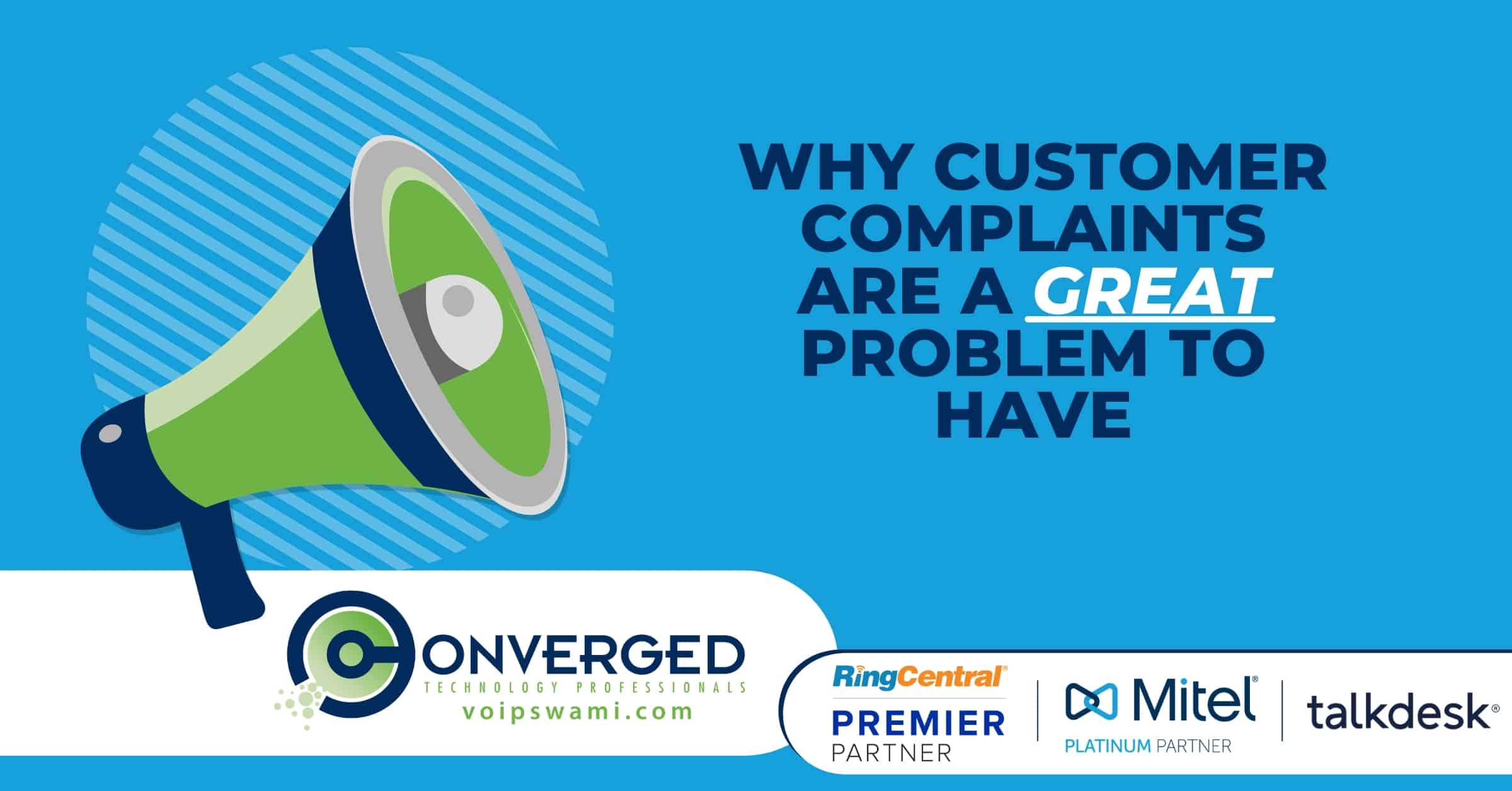
To truly understand your customer-base and grow as an organization, customer complaints must be recognized for and utilized as the valuable resource that they are.
With many customers to serve each day and while also building new client relationships, it is inevitable that things will go wrong. When this happens, the best possible outcome is a customer complaint because it is an opportunity to find a resolution. On the other side of the spectrum, the worst possible outcome is that the customer feels like they can’t get anyone to listen and are driven to another brand. According to Accenture, $1.6 trillion is lost by US companies each year because of poor customer service.
If a company knows how to properly handle customer complaints, these operational misfires can be transformed into opportunities to refine your business. You can use negative feedback in a very positive way to facilitate growth and improvement in operational processes and the product itself.
Why Are Customer Complaints Insightful?
First and foremost, they pinpoint vital areas for service improvement. Complaints expose where there are inconsistencies and weakness in your business model from the consumer’s perspective. Some major corporations spend millions of dollars each year to receive this exact feedback that your customers are willing to provide for free.
Second, customer complaints identify procedures that are out of date or where they are functioning poorly. Your clients need a clear path to seek resolutions to their problems and as your channels have matured, maybe there are some gaps that are no longer readily apparent. Listening and fixing these issues not only benefits the customer that’s complaining, but every other customer who also travels that same path in the future.
Third, complaints keep management informed. Customer complaints do not seek to sugarcoat issues and quickly expose information that is out of date or incorrect. Due to their bluntness, complaints can inform upper management about conditions at the forefront between representatives and clients.
Finally, customer complaints improve communication with customers. These complaints are a rare opportunity to have frank, open conversations about problems that bother your customers.
How to Properly Receive Customer Complaints
Before customer complaints can be utilized, they must be communicated. If customers don’t have a convenient method to reach a service representative, they are unlikely to reach out at all. It’s important to remember here as well that “convenience” is from the consumer standpoint- it's no longer sufficient to say that they can call or email. You must provide communications channels that fit your customer’s lifestyle and expectations.
Remember, “feeling unappreciated” is the number one reason why customers switch away from products and services. That means if there’s a 25-minute hold time to report a frustration, that’s 25 minutes your customer has to see what your competitor is currently offering. The expectation on the customer’s side is a near instant resolution and if there’s not a communications channel readily available, two in three consumers will move onto the next brand without saying a word.
Making Customer Resolution a Company Initiative
Once you do connect with that angry customer, another major disconnect is when your agent informs them that they reached the wrong department or specialist, or perhaps they reached out on the wrong channel for the type of support they’re looking for. What may have been a minor frustration only minutes ago can escalate quickly when a customer must talk to multiple agents and repeat information multiple times.
Additionally, customers are even more demanding with response time expectations. For example, 78% of customers that reach out via social media or email expect an answer within an hour. Of those customers that reach out via chat, the average wait time before leaving is only 45 seconds!
Unified Communications in a contact center environment is one of the primary ways businesses are harnessing customer complaints to their advantage. UCaaS is closely tied to customer service because it enables businesses to tie together the various methods of communication that customers expect, while using data to better anticipate customer need, routing calls more efficiently and providing faster, specialized levels of service.
The Changing Evolution of the Customer Service Center
While email still accounts for 54% of customer service communication, the methods by which customers prefer to communicate are diversifying and expanding in nature. For instance, Millennials prefer to contact a business through live chat and an astonishing 40% of consumers have used social media to contact customer service. These changing habits challenge organizations to turn multi-channel customer complaints into an opportunity for brand differentiation.
The problem that standard contact centers have in meeting these specific challenges is that their technologies are segmented- meaning that one representative is handling all the web chat queries while another is answering calls or chatting via social media. When an issue has to be elevated to a different level of support, legacy contact centers do not pass that initial information along in a centralized system for the next agent to view- the process instead starts all over again.
Unified cloud contact centers centralize this information across all channels to provide a complete history of all customer interactions regardless of channel. Over time, this data becomes invaluable in placing specific customers in touch with the perfect agents to solve their problems in the most efficient manner possible, even if it requires tying in an expert that’s at a different company location.
Want to learn more about how UCaaS and CCaaS can help you make the most of customer complaints? Call us at 877-328-7767 or message us here.
If you enjoyed this article you may also enjoy:
